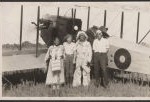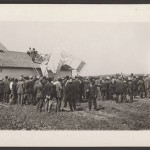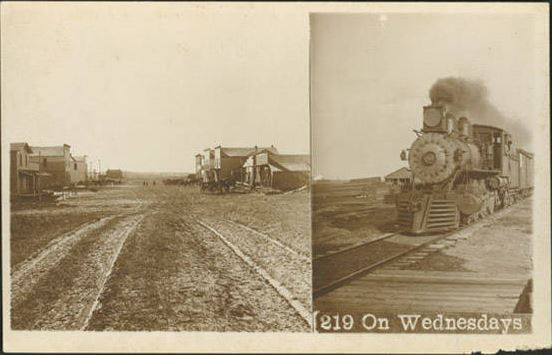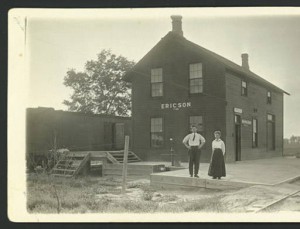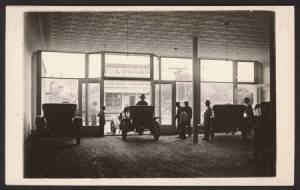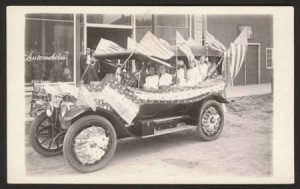August 29, 2014
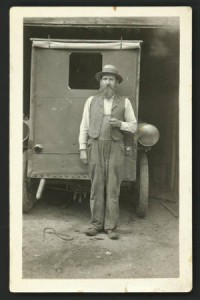 One of the fun things I like to do while browsing through Nebraska Memories is to find pictures that remind me of a phrase or movie title, then add a Nebraska twist. That led me to today’s post about Nebraska photographer John Nelson, and the movie “Planes, Trains, and Automobiles.”
One of the fun things I like to do while browsing through Nebraska Memories is to find pictures that remind me of a phrase or movie title, then add a Nebraska twist. That led me to today’s post about Nebraska photographer John Nelson, and the movie “Planes, Trains, and Automobiles.”
John Nelson was born in Halestad, Sweden in 1864. He came to Nebraska with his parents at the age of seventeen. His many photographs tell the story of small town life in Nebraska during the first decades of the 20th century. His subjects included people, towns, businesses, community activities, early airplanes, trains, and automobiles.
The picture to the left is of the photographer himself, standing in front of the rear end of his motorized portable darkroom, between 1907 and 1917.
The pictures immediately below are the first stop in the planes, trains, and automobiles tour. They are of a biplane with its’ pilot, two Native Americans and a woman, and then a crowd of onlookers at the site of an airplane crash, respectively, about the same time period. These are just two of several airplane photographs taken by John Nelson found in Nebraska Memories, and illustrate the variety of pictures he took.
Trains are our next stop in the planes, trains and automobiles tour. Mr. Nelson took photographs of the trains themselves, but also took photographs of the people and places associated with the railroads. This can be seen in the pictures below of the “219 on Wednesdays” coming into a small Nebraska town, and in the picture of a couple standing outside the Ericson, Nebraska train depot.
Then last on the tour, but certainly not least, are the pictures of automobiles. John Nelson took many pictures of cars: everything from cars in downtown Omaha to individuals in or beside their cars, and from the F.J. O’Hara Buick Dealership in Spalding, Nebraska to automobiles decorated for parades, as seen below.
I hope you’ve enjoyed our photographic tour of John Nelson’s planes, trains, and automobiles. Visit Nebraska Memories to search for or browse through many more historical images digitized from photographs, negatives, postcards, maps, lantern slides, books and other materials.

